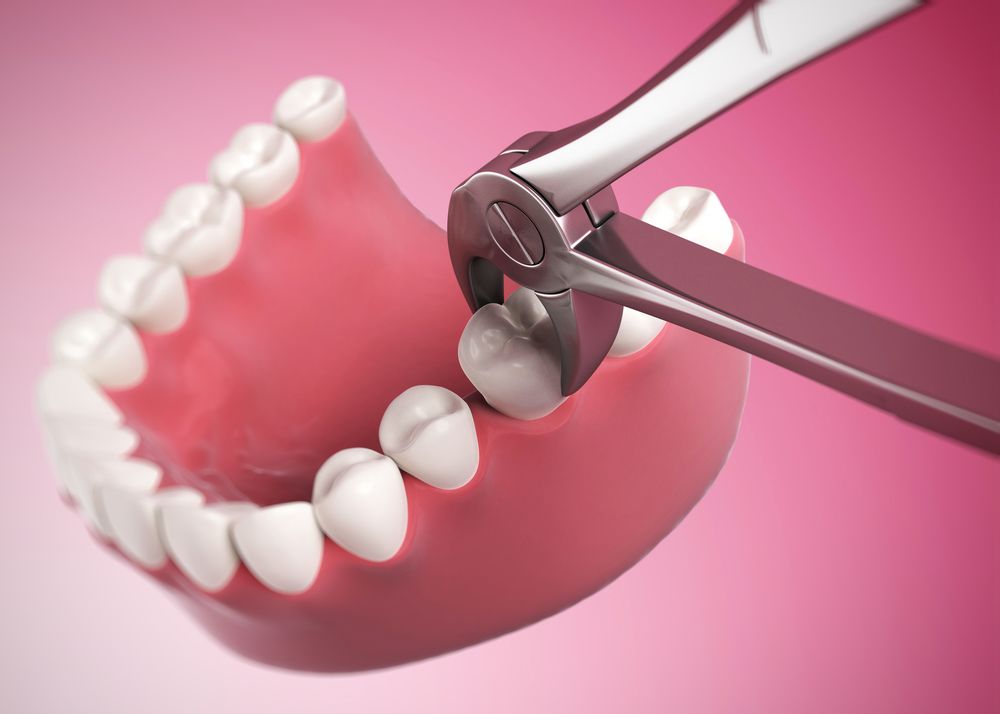Dental Extraction Candidates
 Dental extractions are commonly performed on teenage and adult patients to maintain the health of their teeth and gums. During this procedure, Dr. Craig Goldin or Dr. Marcy Goldin will apply numbing medication to the treatment area, then remove the entire length of the tooth, from root to crown. Patients that feel apprehension or anxiety at the thought of tooth extraction treatment can also undergo IV sedation. Dr. Craig Goldin is certified in IV sedation, and can administer the medication so you have virtually no memory of the extraction procedure.
Dental extractions are commonly performed on teenage and adult patients to maintain the health of their teeth and gums. During this procedure, Dr. Craig Goldin or Dr. Marcy Goldin will apply numbing medication to the treatment area, then remove the entire length of the tooth, from root to crown. Patients that feel apprehension or anxiety at the thought of tooth extraction treatment can also undergo IV sedation. Dr. Craig Goldin is certified in IV sedation, and can administer the medication so you have virtually no memory of the extraction procedure.
We may recommend a dental extraction to appropriate candidates at our Troy, MI practice. To find out if this general dentistry service can help you maintain your oral health, contact the Cosmetic Dentistry Institute today.
Overcrowding of the Teeth
Younger patients that are undergoing a comprehensive orthodontic treatment plan may undergo tooth extraction as one of the first stages of treatment. Some patients have overcrowding of the teeth and need the teeth pulled so the remaining teeth can move into proper alignment. This is the case when the size of the teeth is too large in relation to the size of the jaw. If your dental arches can’t accommodate all of your teeth, we may recommend dental extraction and braces.
Some patients may be at risk of overcrowding after braces treatment, when the wisdom teeth come in. If your wisdom teeth are growing in at an angle or there is not enough room for them, we may recommend wisdom tooth extraction.
Wisdom Teeth Impaction
In addition to causing overcrowding, the wisdom teeth may become impacted. An impacted wisdom tooth does not fully erupt from the gum line, which can result in pain, swelling, infection, and damage to the adjacent teeth. To prevent these problems, impacted wisdom teeth should be extracted.
Unhealthy Teeth
A common reason for tooth extraction, especially among adults and seniors, is oral health problems such as tooth decay, root canal infection, and gum disease.
Tooth decay results in the destruction of healthy tooth structure. In the initial stages of tooth decay, a small cavity will form. Left untreated, bacterial acids will continue to damage the tooth, creating a larger cavity. Eventually, the decay will cause so much damage that there will no longer be enough healthy tooth structure intact to support a dental restoration. When this occurs, we recommend tooth extraction.
When tooth decay is allowed to progress to the point that the bacteria reach the root canals of the teeth, the soft tissues, nerves, and pulp that are housed within these central chambers become infected. In addition to destroying the tooth, the root canal infection can damage the underlying bone and gum tissue. In severe cases, the tooth can’t be saved and will need to be extracted.
Periodontal disease is a gum infection that gradually destroys the gum tissue, ligaments, and bone that supports the teeth and holds them in place. In its early stages, the gums become swollen, tender, and bleed easily, and begin to pull away from the teeth. As the infection grows, the periodontal pockets around the teeth grow larger, and the bacteria reach the deeper oral structures. Eventually, the teeth become loose, and either fall out or require extraction.
To find out if you are in need of tooth extraction, contact the Cosmetic Dentistry Institute today.


